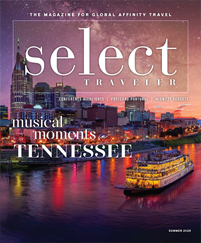Angkor Wat, Cambodia’s exquisite Hindu temple complex in Siem Reap, is rated the top travel site in the world today by the staff of Lonely Planet. It outranks iconic sites like Peru’s Machu Picchu, Australia’s Great Barrier Reef and China’s Great Wall.
We spent an astounding afternoon there following our Mekong River cruise aboard the Avalon Siem Reap. However, exploring Angkor Wat is not the first thing I recall when I look back on this journey to Southeast Asia.
Instead, my first recollection is a chance meeting we had in Phnom Penh with a street-smart guy named Meng, who took us on a daylong adventure in his tuk tuk, capped off by a late night, no-holds-barred dash through the city’s boisterous streets and boulevards.
We flew into Saigon, or Ho Chi Minh City, and took a day to shake off the jet lag before boarding Avalon Waterways’ new all-suite ship, the Siem Reap. We were a group of four: my wife, Kim, and I, and our travel companions, Hal and Elizabeth McCoy.
Saigon is a great town, easy to walk through and filled with plenty to do day or night. We toured its Reunification Palace, where North Vietnamese troops arrived in 1975, ending America’s involvement in the war, and Notre Dame Cathedral Basilica, built during Vietnam’s 19th-century French colonial period. Then we dined al fresco at Hoa Tuc restaurant in the city’s Dong Khoi neighborhood.
We sandwiched two rooftop bars in before and after dinner, first at the Caravelle Hotel near the City Theatre and, afterward, at Chill Skybar, high above the city night. There, we elbowed our way through throngs of millennials and laughed afterward that we were only able to get in because it was a weeknight.
The next day, our Avalon cruise director, Ha Do, answered one of my questions on our way to the ship.
“Tourism is changing the reputation of Vietnam in the world now,” he said. “Censorship still exists here, but capitalism is taking root. It’s allowed as long as you stay out of politics.”
Vietnam Up Close
We boarded and left immediately for Cai Be. Most of us clamored to the front deck to enjoy the late-afternoon ride on a river we’d heard about all our lives. Compared to European rivers, the Mekong is as busy as Times Square. Millions of people still spend their lives on it. Worn wooden boats, fishermen washing nets, barges towing sand, even container ships made their way around us.
Avalon’s Siem Reap is intimate. There were 36 of us in its 18 suites. From the outset, its dining room had the feel of a bistro on the river. It didn’t take long to pick up Australian and Canadian accents in the room, and the group became delightfully international.
Nam, our local guide for Vietnam, joined us for the excursion into Cai Be, a local fishing village. We took a sampan, a small open-air boat used to ferry ashore, and headed into the harbor. Our hosts provided fresh fruits on these sampans, and I was introduced to a new favorite: rambutan.
This prickly little treat is slightly bigger than a golf ball, and opens perfectly to reveal a gorgeous orb of white fruit. It tastes like pear and has a crunchy pit in the center that gives it character.
We surveyed a harbor teeming with wooden boats and houses on stilts pressed against the shore.
“These sellers use bamboo sticks to advertise whatever they have,” said Nam. “These are New Year’s flowers; others have fresh fruits like jicama, mangoes or papaya. They spend most of their lives on these boats. Those houses are on stilts because there is three meters difference between high and low tides.
“The Mekong is 2,700 miles long,” he said. “It crosses six countries: China, Myanmar, Thailand, Laos, Vietnam and Cambodia.”
That afternoon, we walked through our first outdoor market in Sa Dec. The markets take place seven days a week, and locals come twice a day. They throw your senses into overdrive. We walked past dozens of vendors offering live fish, frogs and eels, plus fruits and vegetables. We dodged motorbikes, the vehicle of choice everywhere we went.
“The vendors here are not aggressive,” said Ha. “Hospitality is still the culture. In Vietnam, the marketplace is not just for food. It’s a local gathering place.”









